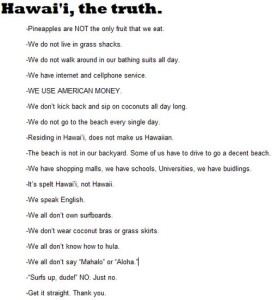https://www.youtube.com/watch?v=Bf0ZMFxIruU
The volcano goddess was worshipped through a ritual dance, originally known as ha’a and now known as hula dancing. The name changed in the 19th century when Christian missionaries arrived and converted many people on the island to Christianity. “When Queen Ka’ahumanu became a Christian, she had the temples and goddess images destroyed” and as a result, “hula was banned” (‘Hula dancing history’, n.d.). However, hula dancing was still taught and performed in secret. There were two different groups of performers; one known as olapa, the agileones, which consisted of the younger generation with lots of energy and the second group was known as the ho’o-paa, the steadfast ones, which consisted of elders that sang and played musical instruments. The attire for hula dancing typically consisted of knee level length skirts made of palm leaves and leis around their necks. When King Kamehameha III gained power in the 1830s, he reestablished hula dancing as part of accepted Hawaiian culture and attempted to create religious freedom throughout the islands. However, missionaries said that the only way hula could be performed was to be done wearing high neck gowns with long sleeves (‘Hula dancing history’, n.d.). About forty years later David Kalakaua came into power and gained the nickname “Merry Monarch,” as he would travel to see his people and held celebrations in his honor thatinvolved hula dancing. After Kalakaua’s reign, hula dancing remained a popular part of Hawaiian culture. There had become a division of the hula after this time, creating a distinction between hula kahiko, ancient, and hula auana, modern (‘Hula dancing history’, n.d.). Although there had been a split, it remained a beautiful dance that portrayed nature and all of its contrasts, from the swaying of the palms to the explosions of war. Hula had also eventually made its way into the rest of the United States and has created a popular party theme of luaus. Luaus have incorporated hula dancing along with fire dancers and barbecues to incorporate some of the Hawaiian culture into the rest of American culture (The Hawaiian Islands, 2015). Hollywood has also made hula more commercialized and added the guitar and the ukulele to the dance, even though it was not in the original culture. The beauty of hula dancing remained a prominent part of Hawaiian culture throughout the years, demonstrating the strength of the cultural influence on the inhabitants of the islands.

